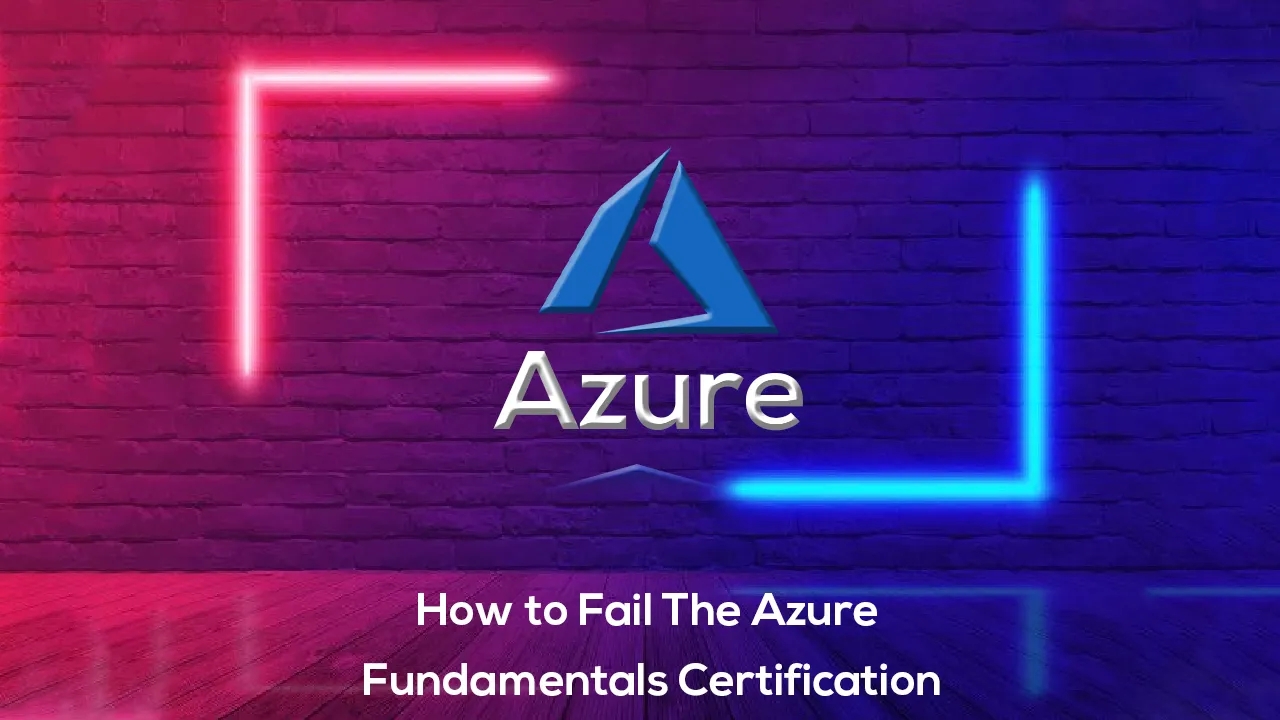AZ-900 is the most popular certification for the (almost) most popular Cloud service in the world. Azure Fundamentals acts as the starting point for many people working with the Cloud.
It shows you have a good, high-level understanding of Azure, which is great but also what throws a lot of people. It isn’t about whether you can architect a web-app and automate your deployments with a CI/CD pipeline.
Instead, the certification’s strength comes with the business-user perspective that it targets, but this is also where many of the more technically-inclined of us will struggle.
That’s not to say this certification isn’t useful for techies; it certainly is. In-fact the overview of cloud concepts, infrastructure, security, and services is a must-have for anyone working with the Cloud.
The course isn’t technically challenging, but it is broad. We will be reciting the support level we need for 24/7 access to customer phone lines, or what setup our IT admins need for deploying VM’s with Powershell scripts.
So hopefully, it’s understandable that despite its fluffy facade — this is a tricky certification to approach. Let’s have a run-through of what to do — and **not **do — to ace AZ-900 the first time around.
Preparation Time
The amount of time you need to prepare for the exam will vary significantly. If you’re a senior Cloud engineer who’s transferring from AWS to Azure, you probably don’t need more than a day at tops.
If you’re wondering why Microsoft offers a certification covering those fluffy white things in the sky, give yourself a few extra days.
If you’re a developer, but haven’t had much exposure to the Cloud. **Three to four hours every day for a week should be enough **— or two weeksto be safe.
Official Azure Fundamentals Learning Path
Easily the best place to get started is Bill’s very own Azure Fundamentals Learning Path.
Officially, it should take you a total of nine hours and 48 minutes. For me, it took much longer.
If you simply read through it, and watch the short videos, just under ten hours is probably right. But I would recommend a more active approach, trying a mix of:
Taking plenty of notes. A small recommendation from me for note-taking — try out notion (it’s fantastic).
When you see new terms, such as load balancer, read more about it. Ask questions like — Why is it a layer-4 load balancer? Etc.
Try using the services. Using Azure for some mini-projects will take your understanding to a whole new level.
At the same time, don’t go overboard with these extra steps. We will continue this more active approach to learning throughout the following steps, so don’t exhaust yourself.
Altogether, I would recommend spending around fifteen hours on this — but of course, work at your own pace.
FreeCodeCamp’s Azure Fundamentals Tutorial
Next up is FreeCodeCamp’s AZ-900 tutorial video on YouTube. After grinding through Microsoft’s learning path, this is a welcomed change of pace.
This video is the best I’ve seen for AZ-900, and at three hours long, it covers a lot.
Although it explains everything at a high-level, you probably won’t pass the course from this video alone. But it’s excellent for consolidating much of what we learned in the official learning path. The video format makes it much easier to follow too!
The same approach to taking an active approach to our learning applies here too. Make notes, do some extra reading, and get in some practice.
Practice Tests
Initially, I was hesitant about paying for one of the many practice tests available online. After I finished my first test, I’d scored a measly 56% — a sure fail.
So if there is one thing I can recommend, even more so than the official learning path, or FreeCodeCamp’s video. You should invest in a practice test.
Secondly, if there’s one thing I can recommend more than buying a practice test. Read the test reviews!
Many of the practice tests out there are outdated, so exercise a little caution.
I used Skillcertpro, which comes with seven practice tests.
Whether you use Skillcertpro or another platform, work through every single exam they provide. I found that I would get a cool 92% on one exam, then 60% on the next. They can vary a lot.
Finally, at this stage, an active approach is super important. Take the practice exam, read through the results — make a mental note of what was you got right, and investigate what you got wrong via the official Azure documentation or elsewhere.
#azure #programming
